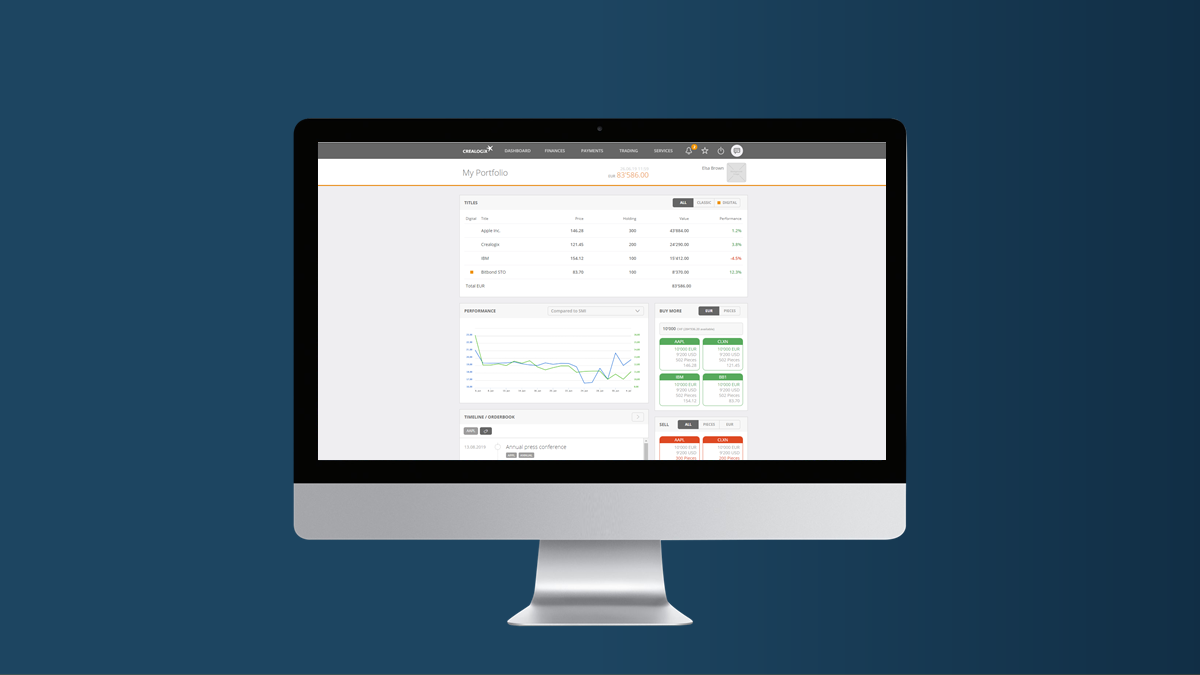
At the “Blocksize Capital Market Day”, which took place on 26 February 2020 in Frankfurt am Main, the talk was about the digitisation of assets, and how this will be largely characterized by Distributed Ledger Technology (DLT), also known as blockchain. Representatives from banks, stock exchanges, regulatory authorities and fintechs came together to discuss what this could look like and what is already possible today. It was at this event where we also showcased our frontend for trading digital assets.
The organizers of the Blocksize Capital Market Day at the Frankfurt School of Finance & Management set out to discuss where DLT and the capital market can intersect. Representatives from the financial industry, blockchain experts and regulators highlighted how digital assets can be integrated into the existing banking landscape and looked at regulatory challenges as well as the current legal situation. The initiators, the Frankfurt School Blockchain Center and our partner Blocksize Capital, a Frankfurt-based software company, deserve great credit for bringing together various stakeholders so they could share their opinions with one another, including how sustainable ecosystems and business models are now emerging; how the perfect DLT solution does not exist (yet); and how anyone who wants to help shape this up-and-coming market that promises great potential will have to deal with uncertainties and any challenges as a result. The half-day event where attendees shared knowledge and experience helped to shed more light on the subject.
Assets become tokens
Both institutional investors and private individuals can trade digital assets today. As an External Advisor and former Chief Digital Officer, Sven Roth presented the Swiss platform SDX (SIX Digital Exchange), which is a leader in digital asset exchange. In Germany, the Stuttgart stock exchange offers the Digital Exchange, which is the first regulated trading platform for digital assets. When assets are digitised, they become tokens – or digitised reproductions “including the rights and obligations contained in their value and their transferability” (according to BaFin) – and virtually anyone can access and trade them.
Integrate digital assets via open banking
In order to enable their customers to do this within the framework of digital banking and to enhance the customer experience, financial institutions are required to integrate digital assets. As a result, we are currently expanding our open banking platform – Digital Banking Hub – by adding a “Digital Assets” module. Based on our User Experience Platform (UXP), banks can create a front-end that mirrors the look-and-feel of their digital and mobile banking and shows customers their digital assets along with their overall portfolio. With this solution, which we are about to launch, customers will see relevant information appear on their screens, including:
- data sheets
- international token classification
- taxes for digital assets
- research options on trading and investment
Interface to investment management software
Users benefit from a consistent and modern user experience across all devices. As the Digital Banking Hub – of which the Digital Assets module will be a part – is an open ecosystem, it can be accessed via various core banking systems and middleware, and further services can be integrated via APIs. The solution can be connected as a front-end to investment management software. As a specialist in digital banking, we cooperate with Blocksize Capital, among others, to provide banks with a holistic solution for DLT and Blockchain-based assets. As a result, we enable them to integrate the management and trading of digital assets into their portfolio. Together we have created the technological basis for financial institutions to build a significant market for investments in digital assets. This benefits not only users and banks, but also the entire economic region thanks to the stimulus of innovative investments.



